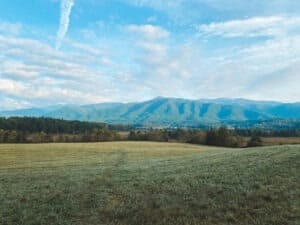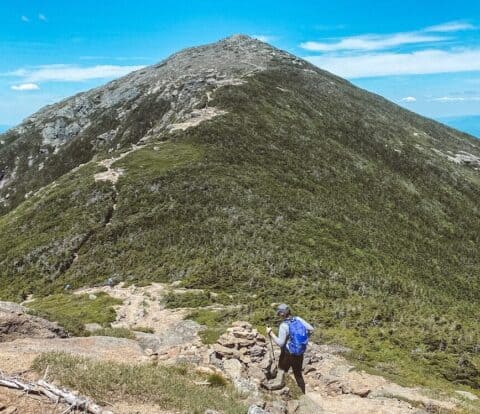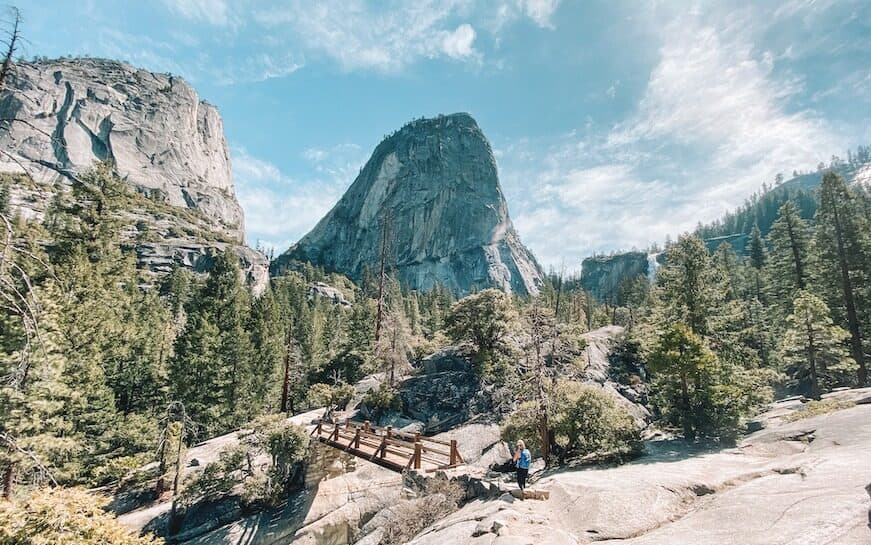
You may have heard about the 7 Principles of Leave No Trace – but do you know what they mean? Every year millions of Americans visit our parks, forests and deserts looking for adventure in the pristine wilderness. Sadly, every summer trails and recreation areas are littered with trash and damaged by hikers behaving badly.
While every kindergartener knows that littering is bad, even seasoned hikers might find themselves wondering, “can’t I just toss this apple core on the side of the trail?” Or, “will it really matter if I take a shortcut?”
If you are hiking in the backcountry, or even your own backyard, how do you know what to do? The answer is, “Leave No Trace.”
The 7 Principles of Leave No Trace for hikers and campers are easy guidelines for best behavior when exploring outdoors. In this guide, I will cover everything you need to know about minimizing your impact on nature and leaving the wilderness just as beautiful as you found it.
What is Leave No Trace?
The 7 Principles of Leave No Trace (or LNT) were first developed as a series of educational initiatives by the US Forest Service, National Park Service and Bureau of Land Management. In the 1960’s hiking, camping and backpacking exploded in popularity. As visitors flocked to public lands, many outdoor spaces were in danger of being “loved to death.”
In response, wilderness managers developed educational programs to teach and promote sustainable behavior in the outdoors. Over many years, those programs have evolved into what is now known as Leave No Trace. The nonprofit organization LNT, Inc. now exists to promote ethical outdoor behavior and educate the public on LNT principles.
The 7 Principles of LNT were originally developed with backcountry camping and hiking in mind. When traveling in the backcountry, there are few to no established trails and campsites, and human behavior leaves an exponentially bigger impact on the land. The Principles are now adapted to apply to every kind of outdoor activity – whether rock climbing, boating, or hiking.
But Leave No Trace is more than just a set of rules and do’s and don’ts. LNT is a framework to make educated decisions in nature. You can use LNT no matter where you are, or what activity you’re engaged in. By practicing Leave No Trace as hikers, we minimize our negative impact on nature as much as possible, preserving our favorite places for generations to come.
The seven principles of leave no trace are:
- Plan ahead and prepare
- Travel and Camp on Durable Surfaces
- Dispose of Waste Properly
- Leave What you Find
- Minimize Campfire Impacts
- Respect Wildlife
- Be Considerate of Other Visitors
1. Plan Ahead and Prepare
The first of the 7 Principles of Leave No Trace is Plan Ahead and Prepare. Good planning goes a long way outdoors. Before every adventure, research trail and weather conditions, and park rules and regulations – including state and local COVID 19 rules. Several National and State Parks now require advanced day-use permits and reservations to enter crowded locations. Looking to climb Half Dome? You’re gonna need a permit. Headed to Joshua Tree? Know where to find water and restrooms beforehand.
When you know exactly what to expect, you are more likely to have a fun, sustainable, and SAFE adventure. National Park Search and rescue operators conduct an average of 12 rescue operations every day and unfortunately many operations end in tragedy. Hikers who fail to plan ahead put themselves, and others, at risk of injury, expensive emergency care, or just a bad experience.
How To Plan Ahead and Prepare
Check park and local websites to find out about trail closures, fires, permits and other policies
Check the weather forecast both at the trailhead and at points along the trail. Remember weather at the parking lot is often much different than at the summit. Pack accordingly!
Bring a first aid kit, extra clothing, extra food and plenty of water.
Get familiar with your route and bring a GPS or map and compass – and know how to use them
Know the limits and skills of every hiker in your group. Some trails will require technical gear or advanced hiking skills to conquer.
New to hiking? Check out my Hiking Basics guides to start safely hiking and exploring!
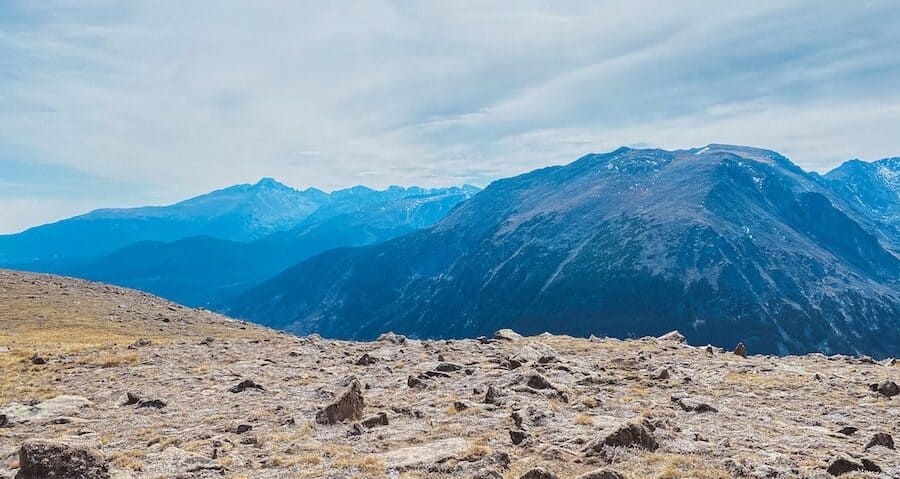
2. Travel and Camp on Durable Surfaces
Hiking and camping on durable surfaces is one of the best and easiest ways to practice Leave No Trace on a hike. What are durable surfaces? Rocks, gravel, and established packed dirt trails can withstand the impact of thousands of visitors every month. Alpine tundra, marshland, moss, even meadows can take years to grow and can easily be destroyed by the careless trampling of just a few boots.
When traveling in the “frontcountry” stay on established, official, trails. What is the frontcountry? It usually refers to areas that are easily accessible and mostly used by day hikers or in developed campgrounds.
Believe me, I get how tempting it may be to step off the trail to use a shortcut, or get an epic photo. But stepping off-trail can damage fragile ecosystems, or even put you in harm’s way in places like the Grand Canyon or on narrow mountain paths.
Hiking and Camping in the Front Country
Stay on the established trail. Only briefly step off the path for hiker safety, for example to allow hikers or livestock to pass on a narrow trail or to allow for social distancing.
Don’t cut corners on switchbacks or across fields and meadows.
Camp in designated sites in frontcountry campgrounds. Camping reservations can be expensive and hard to come by – but they prevent damage to surrounding ecosystems, and usually come with perks like running water and toilet facilities.
Hiking and Camping in the Backcountry
When hiking in areas with no trails, spread out your footpath to minimize the impact of your hiking group. Too many hikers following the same route will accidentally create a new trail.
Camp in designated backcountry sites, or areas that have been used for camping before. If there are no designated or previously used sites, try to camp on bare dirt, snow, or dry grass. Camp at least 200ft from water sources to protect fragile plant and animal life.

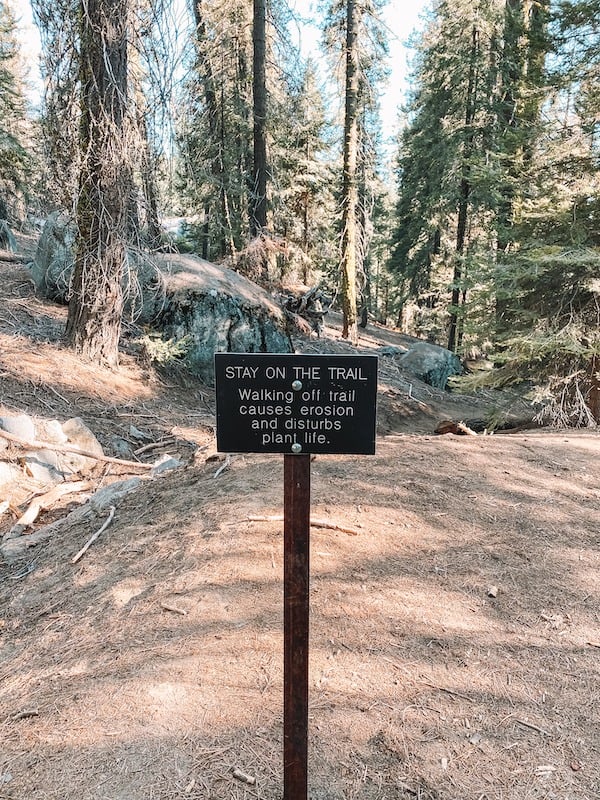
3. Dispose of Waste Properly
The cardinal rule of the 7 Principles of Leave No Trace is: if you pack it in, you must pack it out!. This includes obvious trash like water bottles and food wrappers. However, even organic material, like apple cores and orange peels should be carried out and disposed of properly.
No one wants to see a trail littered with garbage. And while organic material like fruit and granola will eventually biodegrade, it may take months or years. Meanwhile, animals will scavenge food waste and may stop eating their natural food or become sick. Animals who associate humans with food may become aggressive towards people, causing serious problems.
How Do I Dispose of Waste Properly?
Pack out all your trash, including wrappers, fruit peels and eggshells.
Camping? Check your campsite for litter and leftover food before leaving.
Utilize toilet facilities whenever possible, otherwise deposit solid waste – you know what I’m talking about – into a proper 6” cathole at least 200 feet from water, camp, or the trail. Don’t forget to pack out your toilet paper, too.
Hiking with your dog? Don’t forget to pack out fido’s waste as well or bury it like you would human poop. Wild animals may eat dog poop and ingest unfamiliar bacteria and parasites.
4. Leave What You Find
“Take only pictures, leave only footprints”
Leave plants, rocks, and artifacts as you found them. Explore historic or cultural structures from a safe and respectful distance. Avoid picking flowers or taking objects like rocks or petrified wood. Leaving what you find means that other visitors who come after you can experience the wilderness in the same condition as you enjoyed it. And in many state and national parks, removing items is illegal!
How to Leave What You Find
‘Gram it! One of the great joys of exploring outdoors is practicing your photography skills. Photographs are a sustainable way to enjoy the memories of your hike for years to come, without causing damage.
Leave rocks, flowers and cultural objects where you find them.
Graffiti is never ever ok.
Avoid building new structures like campfire rings, trenches, or cutting or drilling into trees.
5. Minimize Fire Impacts
For many of us, it’s hard to imagine camping without a roaring campfire, and maybe a few s’mores. However, campfires can leave lasting impacts on the environment. Every year, wildfires grow more destructive and deadly, especially in the West. Where fires are permitted, use established pits and rings, and make sure your fire is completely out before leaving. Remember, Smokey the Bear is depending on you! ⠀⠀⠀⠀⠀⠀
How Can I Minimize my Fire Impact?
Consider using a camping or backpacking stove instead of a traditional fire. Small stoves are quicker to cook, more efficient to pack and setup, and have far less impact on the environment.
Check fire regulations before you go. Many areas have fire bans in effect during the dry season, or prohibit fires entirely.
Where campfires are permitted, use an existing fire ring or fire pit.
Completely extinguish your fire before leaving or sleeping.

6. Respect Wildlife
Wild animals are, well, wild. By respecting wildlife, we protect not only ourselves from dangerous encounters, but protect the wildlife too.
If you encounter a wild animal, keep your distance. How far? A good rule of thumb is to never get close enough to impact an animal’s behavior. If you see a wild animal looking at you or moving away, you are too close.
Many federally protected areas require visitors to stand at least 25 yards from most wildlife and 100 yards from predators like bears and wolves.
Squirrels and rodents may look adorable, but resist the urge to feed them. Animals may become sick after eating human food or may stop relying on their natural food sources. Animals who associate humans with food may become aggressive towards people, causing serious problems with tragic outcomes. Large predators, like bears, who become aggressive looking for human food must occasionally be euthanized to protect campers and hikers. By properly storing food you save bears, coyotes, and other wildlife from a tragic fate.
How to Respect and Protect Wildlife
Don’t feed, approach, or follow animals.
Properly store food and scented items. Take extra precautions in bear country by using a bear box or bear cannister.
Leash your dog at all times and obey local rules for hiking with pets.
7. Be Considerate of Other Visitors
The last of the 7 Principles of Leave no Trace is the same Golden Rule you learned in kindergarten! Treat your fellow hikers and adventurers with the same respect you expect.
How Can I Be Considerate of Other Hikers?
Follow trail etiquette: on narrow trails, uphill hikers have the right of way. Hikers yield to equestrians, and bicyclists yield to hikers and equestrians.
Avoid yelling and loud voices on the trail, unless you are in bear country.
Leave the music at home. Many hikers escape to nature for the peace and quiet. Be respectful and save the tunes for the car ride home.
Bonus: Leave it Better
Congratulations, you now know everything you need to fully integrate the 7 Principles of Leave no Trace into your hiking and outdoor adventures!
Now, are you ready for some extra credit? The 7 Principles of Leave No Trace is just the first step to protecting our incredible wilderness. If you want to take outdoor advocacy and protection to the next level, consider Leave it Better.
What is Leave it Better? It’s exactly what it sounds like. Leave it Better encourages everyone to leave the trail, park, or campsite safer, cleaner, and better protected than when you found it.
What Can I Do to Leave it Better?
Pick up garbage you find along the trail. Bring a garbage bag or small bag with you and pack out any stray litter you find on your way back to the trailhead.
Encourage others to learn and practice leave no trace principles.
Feeling ambitious? Get to know your local trails in a whole new way by volunteering with a local organization. Groups like the NY/NJ Trail Conference frequently organize trail maintenance and restoration volunteer events.
Interested in getting involved in your local hiking community? Check out my list of the 23 Best Hiking Blogs to connect with hikers and outdoor organizations in your area.
Are you interested in learning more about LNT? LNT.org offers educator courses and awareness programs across the country. By educating ourselves about the 7 Principles of Leave No Trace, and spreading that gospel to others, we become advocates for the incredible, yet vulnerable, wilderness around us. Together we can ensure that our public lands are preserved and protected for generations to come.

